Discover the beauty of Chopta with trekking tours to Tungnath Temple and Chandrashila.
Published on December 26, 2024
Discover Chopta: The Hidden Gem of Uttarakhand
Often referred to as a hidden gem, Chopta is a lesser-known but highly rewarding trekking destination in Uttarakhand. Located at an altitude of around 2,680 meters, Chopta is surrounded by awe-inspiring landscapes, from thick oak and rhododendron forests to expansive meadows. The region is also home to two of the most iconic trekking destinations: Tungnath Temple and Chandrashila summit. These trekking routes not only offer stunning Himalayan views but also provide trekkers with an opportunity to experience the peace and serenity that only the mountains can offer.
The trek to Tungnath Temple and Chopta Chandrashila Trek From Delhi is famous for its beauty and spiritual significance. Known as one of the highest Shiva temples in the world, the Tungnath Temple trek is a sacred journey that attracts both pilgrims and adventure seekers. On the other hand, the Chandrashila summit trek is known for its thrilling adventure and panoramic views of the Himalayan ranges.
Nestled in the lap of the mighty Himalayas, Chopta is a hidden gem that beckons trekkers and adventurers from all over the world. Known for its pristine natural beauty, it is home to some of the most awe-inspiring treks in India, particularly the Tungnath Temple trek and the Chandrashila summit trek. These treks offer an exciting combination of spiritual discovery and physical challenge, making them the perfect destination for trekkers of all levels.
If you're ready to reach new heights and experience a unique adventure, this comprehensive guide to trekking Chopta and its iconic Tungnath Temple and Chandrashila summit will help you navigate everything from planning to what you can expect along the way. Whether you're coming from Delhi or anywhere else, Chopta's trekking tours promise memories that will last a lifetime.
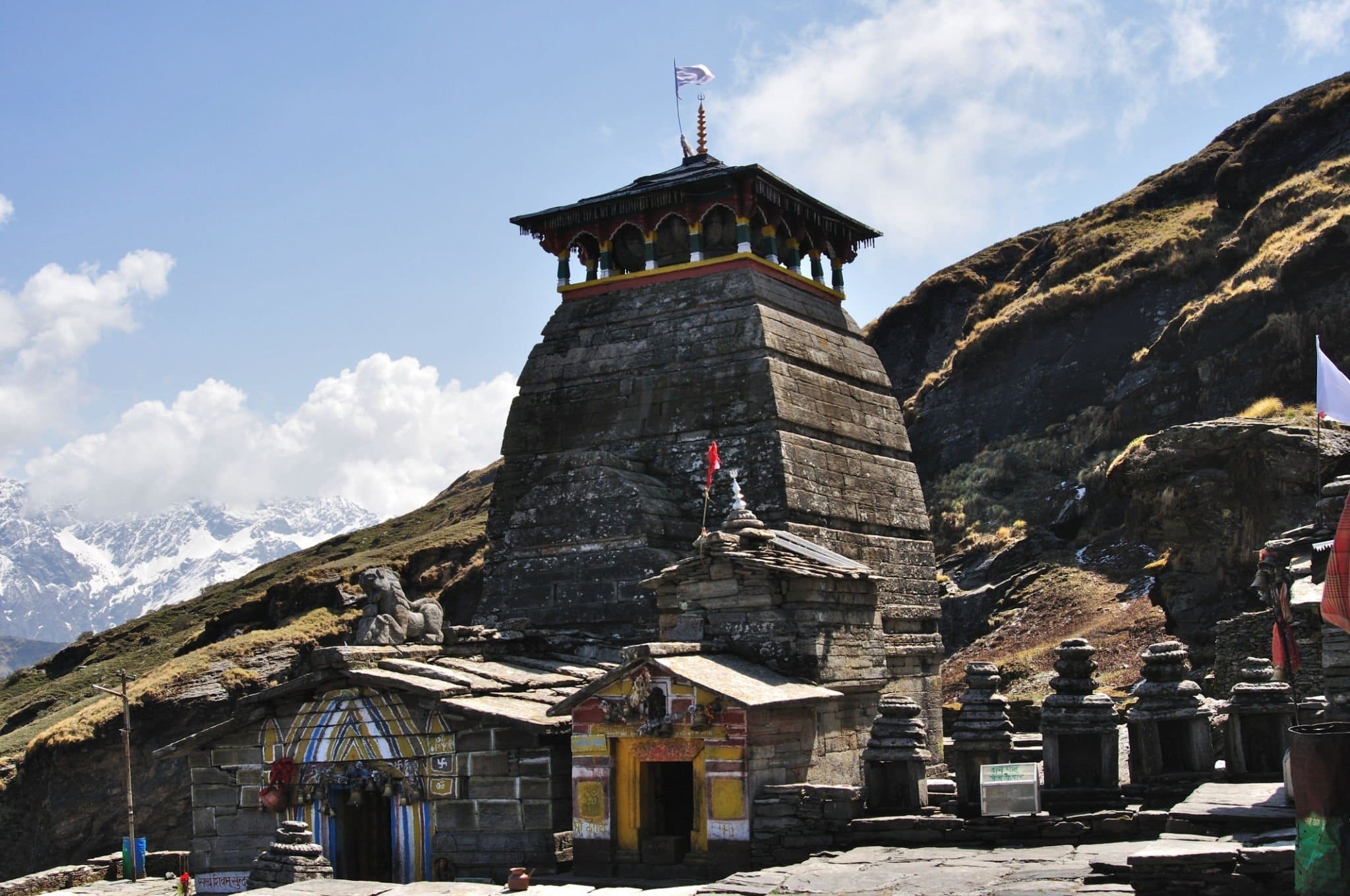
Why Trek to Chopta?
Before we dive into the specifics of the Tungnath and Chandrashila treks, let’s take a moment to understand why Chopta is considered one of the most sought-after trekking destinations in India.
Natural Beauty
Chopta is renowned for its stunning alpine meadows, dense forests, and snow-covered peaks. As you trek along the trails leading to Tungnath Temple and Chandrashila, you’ll encounter panoramic views of the majestic Nanda Devi, Trishul, and Chaukhamba mountains.
Peaceful Atmosphere
Unlike the more commercialized trekking spots, Chopta remains a serene and less crowded destination, offering trekkers a tranquil experience far from the noise of urban life.
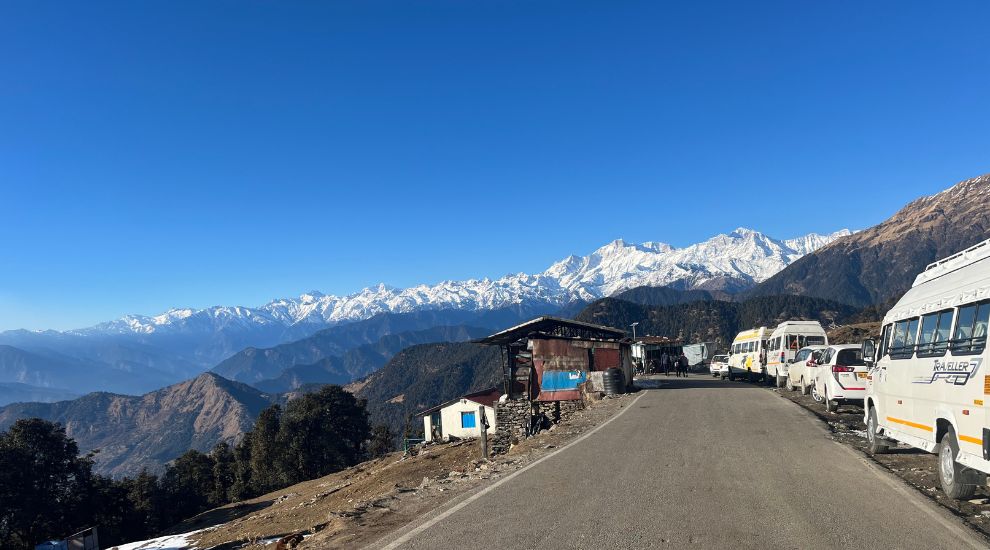
Accessibility
Chopta is easily accessible from Delhi, making it an ideal weekend getaway for those looking to escape city life and reconnect with nature.
Now that we know why Chopta is a fantastic trekking destination, let’s look at two of its most popular treks: the Tungnath Temple trek and the Chandrashila summit trek.
Trekking to Tungnath Temple: A Journey of Spiritual Discovery
Overview of the Tungnath Temple Trek
Standing at an altitude of 3,680 meters, Tungnath Temple is one of the most important pilgrimage sites for Hindus. The trek to the temple is a spiritual and physical journey, offering trekkers a deep sense of connection with nature and the divine. Reaching the temple is a reward in itself, but the journey also offers stunning vistas of the Himalayan landscape.
The Tungnath Temple trek is considered moderate in difficulty, making it accessible for most trekkers. The path is well-marked, and the gradual ascent from Chopta to the temple takes about 3 to 4 hours. Along the way, you’ll pass through dense forests, cross charming meadows, and enjoy the scenic beauty of the area. The trek offers a peaceful, spiritual vibe that resonates with trekkers of all backgrounds.
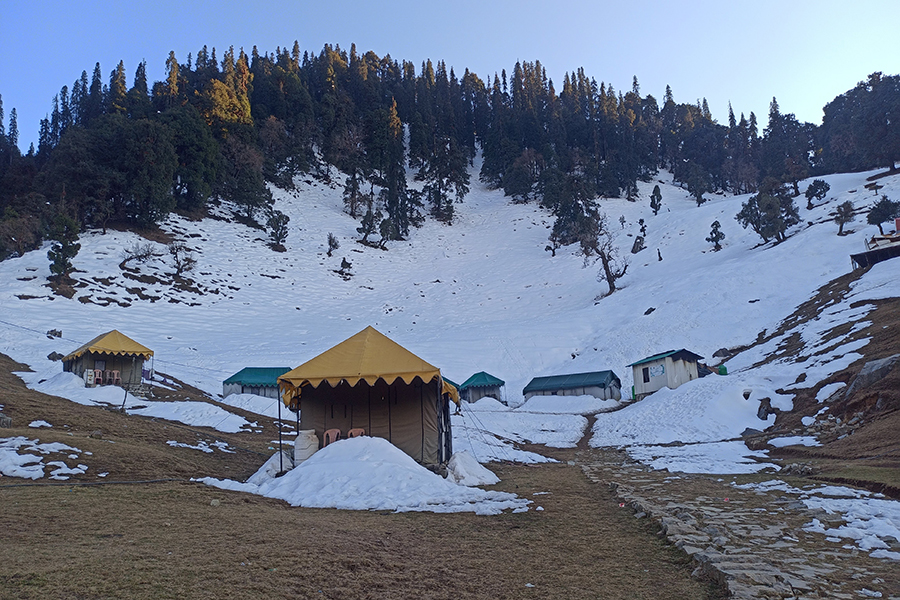
What Makes the Tungnath Temple Trek Unique?
The Tungnath Temple trek is not just a hike; it’s a spiritual journey. Located at an altitude of 3,680 meters, the Tungnath Temple is one of the highest temples dedicated to Lord Shiva. The trek to the temple is relatively short but offers trekkers a chance to immerse themselves in nature while connecting with the divine. The temple itself, with its ancient stone structure, attracts not only pilgrims but also adventure seekers and nature lovers.
For those looking to trek Tungnath from Delhi, the journey is easily manageable. You can take an overnight bus or a private vehicle to Haridwar or Rishikesh, and then continue to Chopta. From there, the trek to Tungnath Temple begins, passing through beautiful rhododendron and oak forests. The final push to the temple is a rewarding climb, where the majestic views of the Himalayan range keep you motivated.
The Spiritual Significance of Tungnath Temple
Tungnath is one of the five Kedarkhand temples, and it’s believed to be the place where Lord Shiva’s arm is worshiped. For many, this trek is not just about reaching a physical destination, but about immersing oneself in the divine energy of the place. The temple, with its ancient stone architecture, has been a site of worship for centuries, attracting both pilgrims and adventure seekers alike.
The Tungnath Temple Trek: A Spiritual and Scenic Journey
Overview of the Tungnath Temple Trek
At an altitude of 3,680 meters, Tungnath Temple is the highest Shiva temple in the world. Trekking to this ancient temple is a spiritual journey as well as an adventure, offering trekkers a perfect blend of culture, spirituality, and natural beauty. Whether you're a devout pilgrim or an adventure enthusiast, the Tungnath trek offers something for everyone.

Trek Difficulty
The Tungnath Temple trek is relatively moderate in difficulty. The trail is well-marked and suitable for both beginners and experienced trekkers. The trek starts from Chopta, and the path is paved with stones, making it easier to navigate, especially during the steep ascent. Expect a mix of dense forests, meadows, and rocky terrains.
What to Expect Along the Way
As you start your trek, you’ll pass through dense forests of oak, deodar, and rhododendron, all teeming with wildlife. The chirping of birds, the rustling of leaves, and the occasional glimpse of a mountain fox or a deer make the journey even more magical. The last stretch leading up to the temple is steep but rewarding. The breathtaking views of the surrounding peaks, including Nanda Devi and Trishul, are worth every step.
The Chandrashila Summit Trek: Conquer the Highest Peak
Overview of the Chandrashila Summit Trek
If you’re looking for a more challenging and rewarding adventure, the Chandrashila summit trek is a must. Located at an altitude of 4,000 meters, Chandrashila offers one of the best panoramic views of the Himalayas. From the summit, you can see Nanda Devi, Trishul, and Kedarnath peaks, creating a stunning 360-degree view of the snow-capped mountains.
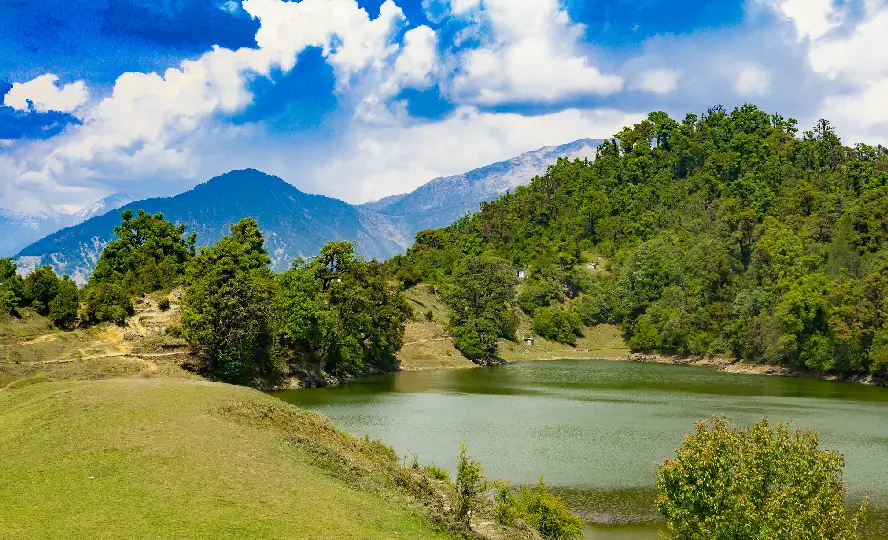
The Thrill of the Chandrashila Summit Trek
After reaching Tungnath Temple, the next part of the trek takes you to Chandrashila Summit, which stands tall at an altitude of 4,000 meters. The Chandrashila summit trek is more challenging but offers a great sense of accomplishment. The trek starts from the temple, where the path ascends sharply to the summit. Along the way, trekkers are treated to spectacular views of towering peaks like Nanda Devi, Trishul, and Kedarnath.
The final stretch of the Chandrashila summit trek involves rocky terrain, making it a bit difficult, but the panoramic view from the top is well worth the effort. Standing at the summit, surrounded by the vastness of the Himalayas, is a humbling experience that will leave you in awe of nature’s beauty.
Trek Difficulty
The Chandrashila summit trek is more challenging than the Tungnath trek due to the higher altitude and the strenuous climb. The last portion of the trek is steep and demands both mental and physical endurance. It is advisable to acclimatize before starting the trek and ensure you’re in good physical condition.
What to Expect Along the Way
The trail to Chandrashila is a bit more rugged, with sections where you’ll need to scramble over rocks. As you ascend, the air thins, and the environment becomes more exposed to the elements. However, the views along the way are absolutely mesmerizing. Once you reach the summit, the sense of achievement is immense, and the views are some of the most beautiful in the entire region.
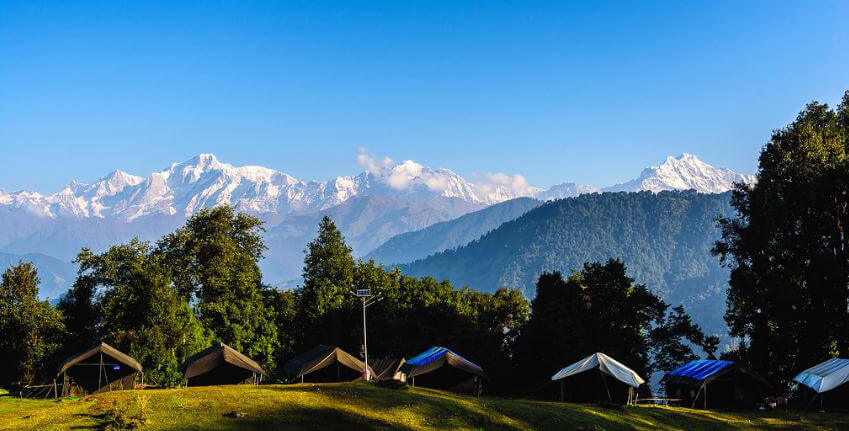
The Chandrashila Summit Trek: Reaching New Heights
Overview of the Chandrashila Summit Trek
While the Tungnath Temple trek offers spiritual enrichment, the Chandrashila summit trek takes trekkers to greater heights—literally and metaphorically. Situated at an altitude of 4,000 meters, Chandrashila (meaning "moon peak") provides one of the best panoramic views in the region. From the summit, trekkers can marvel at the towering peaks of Nanda Devi, Trishul, and Kedarnath, as well as enjoy a clear view of the vast Himalayan ranges.
Trek Difficulty and What to Expect
The Chandrashila summit trek is more challenging than the Tungnath Temple trek due to the higher altitude and the steep terrain. The trek begins right after reaching Tungnath Temple, and from there, the path becomes slightly more rugged. The final climb involves traversing rocky terrain, which requires a bit more stamina. However, the reward is worth the effort. Once at the summit, you’ll be greeted with sweeping views of the surrounding snow-covered peaks and valleys.
A Sense of Achievement at the Summit
Reaching the Chandrashila summit is more than just completing a physical challenge; it’s about overcoming personal limits and standing at the highest point, looking out over the vast, untouched beauty of the Himalayan landscape. The views are spectacular, and the sense of accomplishment will stay with you long after you’ve descended.
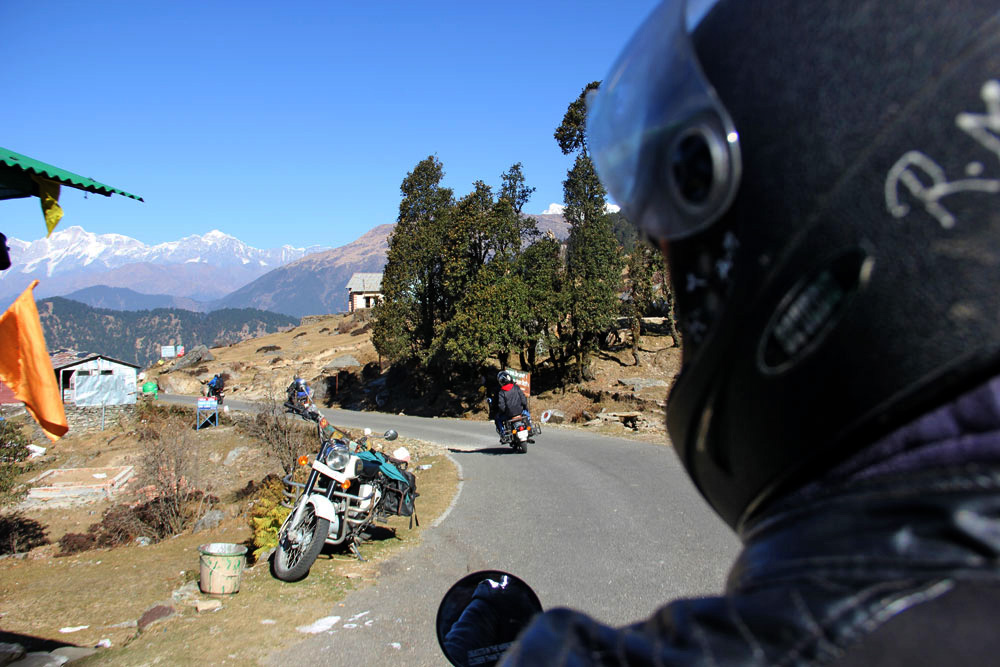
Trekking from Delhi to Chopta: How to Plan Your Journey
One of the great advantages of Chopta is its accessibility from Delhi. Whether you’re traveling by car or bus, Chopta is just a 9–10 hour drive from the capital, making it a perfect weekend trek.
Ideal Time to Visit
The best time to trek Tungnath and Chandrashila is between March and May and then again from September to December. During these months, the weather is pleasant, and you’re likely to see clear skies and breathtaking views. If you enjoy the snow, visiting during the winter months (December to February) offers a magical experience.
Reaching Option For Chopta
From Delhi, you can either take an overnight bus to Rishikesh or Haridwar and then travel by cab to Chopta, or hire a private taxi directly from Delhi to Chopta. The route is scenic, and the drive takes you through picturesque hill stations like Rishikesh and Rudraprayag.
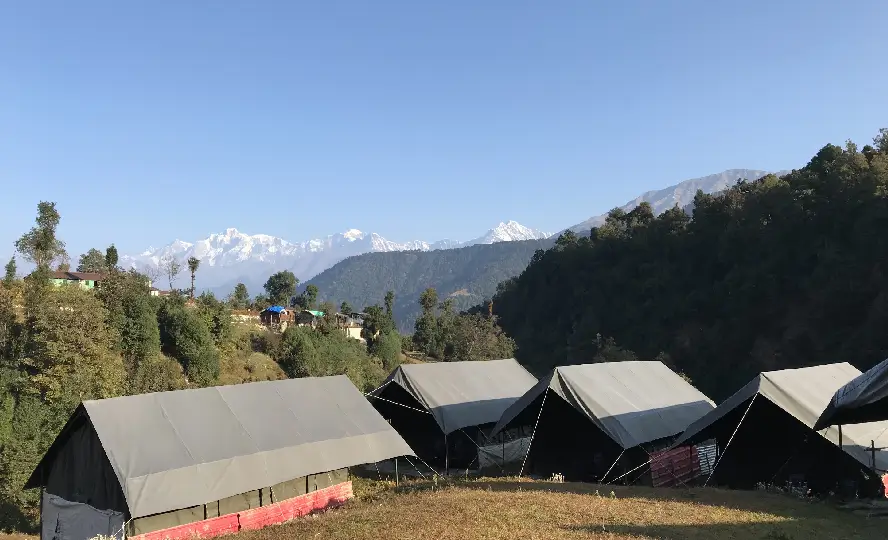
Trekking Tours: Solo, Family, or Group Treks
Whether you’re planning to trek solo, with family, or in a group, Chopta offers trekking tours suited for everyone.
Solo Trekkers
Solo trekkers find Chopta to be a perfect destination to disconnect from daily life and immerse in nature. The trails are safe and well-marked, and the camaraderie between trekkers on the route is always uplifting.
Family Treks
Families looking to explore the mountains together can opt for the Chopta Tungnath trek. The trek is moderate and can be done at a relaxed pace, making it suitable for children and elderly members as well.
Group Treks
Group treks are ideal for friends or groups of trekkers. Group trekking tours provide a sense of community and make the journey more enjoyable. There are various Chopta tour packages available for groups, including guides and support teams to make your trek smooth and memorable.

Tips for First-Time Trekkers to Chopta
If this is your first time trekking to Chopta, here are a few essential tips to ensure a safe and enjoyable experience:
Prepare Physically
Even though the Tungnath Temple trek and Chandrashila summit trek are not extremely difficult, it’s important to be in good physical condition. Engage in cardio exercises like walking, jogging, or cycling in the weeks leading up to your trek.
Pack Smart
Pack light but ensure you have all the necessary trekking gear, including warm clothes (even in summer), sturdy trekking shoes, a raincoat, and a good-quality backpack. Don’t forget your camera to capture the stunning views!
Stay Hydrated and Acclimatize
Hydration is key at high altitudes, so carry a water bottle and drink plenty of fluids. Also, take time to acclimatize at each stage of the trek to avoid altitude sickness.
Trekking with a Guide
While the routes are marked, trekking with a local guide is always a good idea, especially for first-time trekkers. A guide can offer valuable insights and ensure your safety throughout the trek.
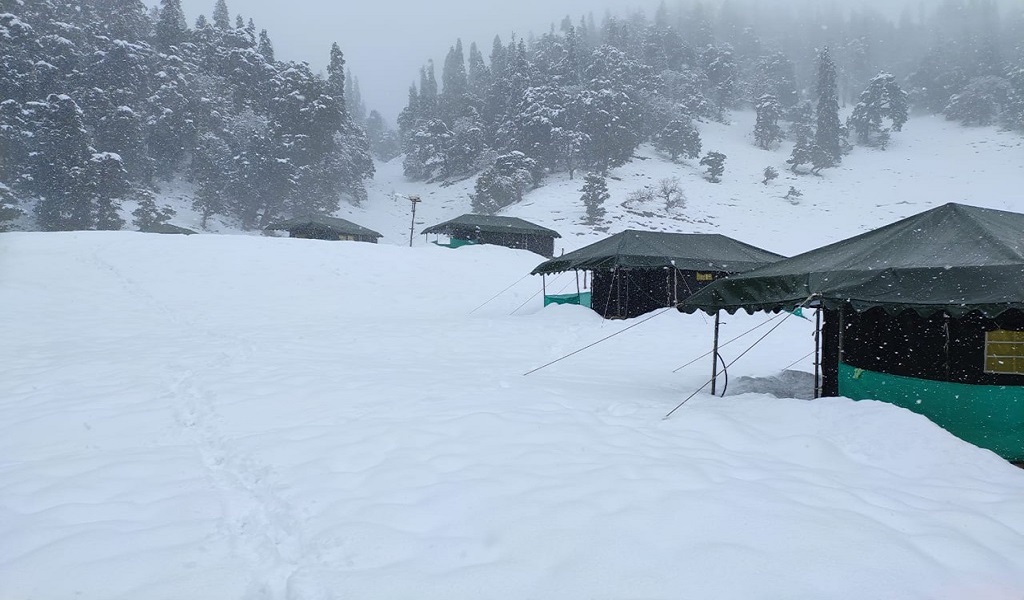
Beyond Trekking: Explore Chopta's Natural Beauty
Chopta isn’t just about trekking. Once you’re done with the Tungnath and Chandrashila treks, take time to explore the surrounding beauty. Chopta is a haven for birdwatchers, nature enthusiasts, and photographers. The meadows are perfect for a peaceful walk or a picnic, and the area is filled with wildlife such as leopards, mountain goats, and a variety of bird species.
Challenges and Triumphs: What Fellow Trekkers Say About the Chopta Trekking Experience
Trekking in Chopta is not just about the destination—it’s about the journey itself. Whether it’s the Chopta Tungnath Trek, the Chandrashila Summit Trek, or the trek to Tungnath Temple, trekkers face a range of physical, mental, and emotional challenges that make the experience truly rewarding. For many, completing the trek is not just about the views at the summit but the journey of perseverance and triumph. Here’s what fellow trekkers have to say about their experiences in Chopta, sharing their challenges, lessons, and moments of accomplishment.
The Physical Struggles: Battling Altitude and Endurance
The physical strain is one of the most prominent challenges on the Chopta Tungnath trek. The trek to Tungnath Temple, the highest Shiva temple in the world, and the onward journey to Chandrashila summit require trekkers to navigate through steep inclines, rugged paths, and sometimes unpredictable weather.
"I had no idea how physically demanding the Chopta Chandrashila trek would be," says Vikram, a trekker who recently completed the trek. "Though the path through the rhododendron forests was beautiful, the altitude started to hit hard as we ascended toward Chandrashila. The final push to the summit seemed never-ending, but I kept pushing myself forward, step by step."
Many trekkers, especially those coming from Delhi, face challenges due to the sudden shift in altitude. The key is to take the trek slow, stay hydrated, and listen to your body. For those who come prepared and pace themselves, the summit views make every moment of effort worth it.
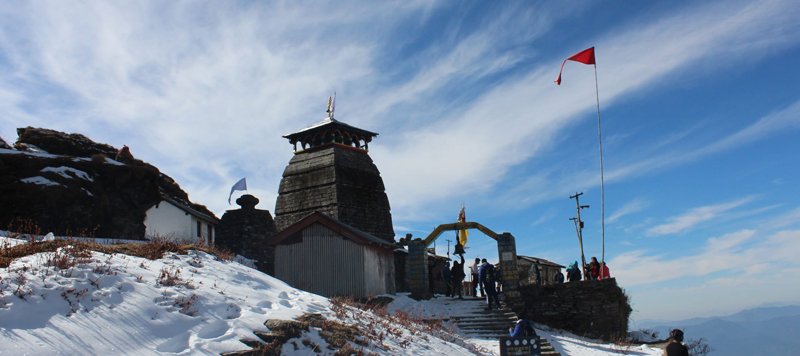
The Mental Fortitude: Pushing Through the Moments of Doubt
It’s not just the physical exertion that makes the Chopta trek challenging—it’s the mental strength required to keep going. Chandrashila summit trek and Tungnath Temple trek are often described as a test of one’s willpower. The mental struggle is real, especially when trekking through dense forests or dealing with fluctuating weather conditions.
"When I was trekking to Tungnath Temple, I kept thinking of turning back because the weather had gotten colder, and I was exhausted," shares Anjali, a solo trekker. "But there was something about being in the mountains, the calmness, and the feeling of being so far removed from daily life that pushed me to keep going. When I reached the temple, the sense of accomplishment was beyond words."
Many trekkers speak about the spiritual experience that comes with pushing through these doubts. The serenity of Tungnath Temple and the clear skies at Chandrashila make the journey more than just a physical trek—it becomes a personal exploration.
The Weather Challenge: Adapting to Chopta’s Unpredictability
One of the hardest aspects of the Chopta Chandrashila trek from Delhi is the unpredictability of the weather. The region can experience sudden weather changes, with trekkers facing everything from bright sunshine to cold winds, snow, or rain—all within a single day. Being prepared for these fluctuations is crucial.
“The weather was a real challenge for our group,” recalls Amit, who trekked with his friends. “We started the Chopta Tungnath Trek with clear skies, but halfway through, the winds picked up, and a light snowstorm hit. We weren’t expecting it, and our clothes weren’t quite suited for the cold. We had to adjust quickly, but once we reached Chandrashila summit, the weather cleared, and the views were absolutely worth the struggle.”
Adapting to the changing weather is part of the challenge. The key is to pack appropriately—layers of clothing, windproof jackets, and rain gear are all essentials that ensure trekkers stay comfortable despite the weather’s unpredictability.

The Rewarding Views: The Triumph of Reaching the Summit
Despite the physical and mental challenges, trekkers who make it to the top of Chopta feel an overwhelming sense of triumph. The view from Chandrashila summit or the grounds of Tungnath Temple is nothing short of breathtaking.
"For me, the hardest part of the Chopta Tungnath trek from Delhi was the final climb to Chandrashila, but when I reached the summit, I felt like I had conquered something much bigger than just the mountain," says Preeti, a seasoned trekker. "The views of the surrounding peaks—Trishul, Nanda Devi, and Chaukhamba—were absolutely stunning. I stood there, taking it all in, knowing the hard work had truly paid off."
Trekkers often report feeling a deep sense of achievement upon reaching the top. Standing at Chandrashila summit, with 360-degree views of the snow-covered peaks, is a moment that makes every bit of struggle worthwhile.
The Sense of Camaraderie: Trekking in Groups and Finding Support
Trekking is often seen as a solitary pursuit—a chance to disconnect from the world and reconnect with nature. However, when you embark on a group trek in Chopta, the experience transforms into something far more profound. The shared challenges, laughter, and moments of awe create a unique bond among trekkers, fostering a sense of camaraderie that stays with you long after the journey ends. Nestled in the heart of Uttarakhand’s Kedarnath Wildlife Sanctuary, Chopta offers not just breathtaking landscapes but also an opportunity to forge meaningful connections through the simple act of walking together.
The Power of Shared Adventures
There’s something inherently special about trekking in a group. When you set out on the trails of Chopta, surrounded by like-minded individuals, you quickly realize that the journey is about more than just reaching the destination—it’s about the people you meet along the way. Whether it’s a guided tour or a self-organized group, trekking together creates a shared purpose that transcends age, background, or experience level.
As you navigate the winding paths leading to Tungnath Temple or Chandrashila Summit, you’ll find yourself exchanging stories, sharing snacks, and encouraging each other during tough climbs. These small acts of kindness and support build trust and rapport, turning strangers into friends within hours. The shared adventure becomes a foundation for lasting relationships, rooted in mutual respect and a love for the outdoors.
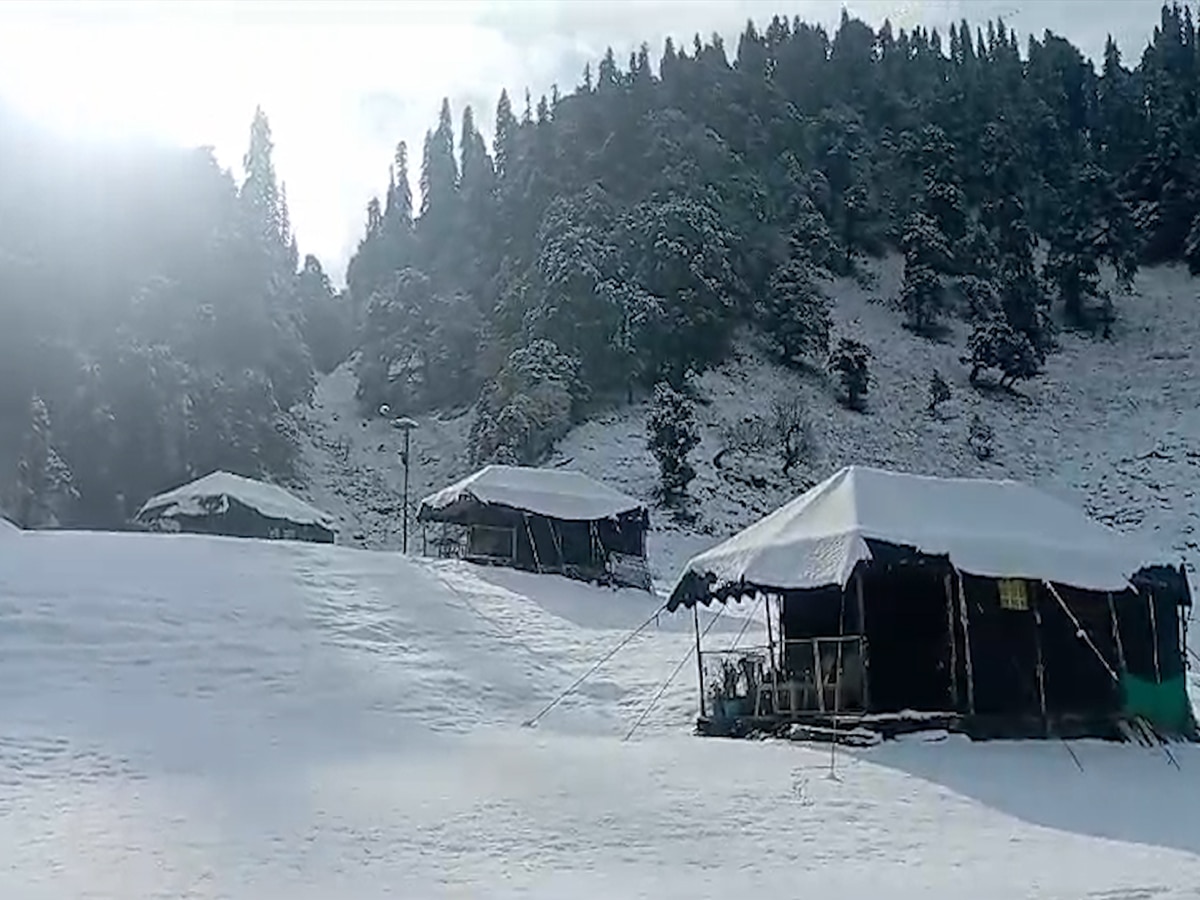
Overcoming Challenges Together
One of the most rewarding aspects of group trekking is how it brings people closer through overcoming challenges. Chopta’s trails can be demanding, especially for beginners. Steep ascents, rocky terrains, and unpredictable weather test your endurance and resilience. But these obstacles become easier to face when you have a team by your side.
Imagine reaching a particularly steep section of the trail where everyone is struggling to catch their breath. A fellow trekker might offer words of encouragement, share a sip of water, or even lend a hand to help you steady your footing. These gestures of solidarity remind you that you’re not alone in this journey. The collective effort to push forward fosters a deep sense of unity and teamwork.
Moreover, celebrating milestones together—whether it’s reaching the summit of Chandrashila or completing the Tungnath Temple Trek—amplifies the joy of accomplishment. High-fives, hugs, and cheers echo across the mountains as you stand united, marveling at the panoramic views of Nanda Devi, Trishul, and Chaukhamba. These shared victories strengthen the bonds formed during the trek.
A Melting Pot of Stories and Perspectives
Group trekking in Chopta introduces you to a diverse array of individuals, each bringing their own unique story and perspective. You might find yourself trekking alongside students taking a break from academics, professionals seeking solace from city life, families bonding over nature, or solo travelers exploring new horizons. Despite their differences, everyone shares a common goal: to experience the beauty of the Himalayas.
These interactions provide a platform for cultural exchange and personal growth. Conversations flow effortlessly as you learn about others’ lives, passions, and motivations. Someone might share tales of their previous treks, while another recounts their journey to finding peace in nature. Listening to these stories broadens your worldview and inspires you to reflect on your own experiences.
For example, you might strike up a conversation with a retired teacher who has dedicated her life to education or a young entrepreneur chasing his dreams. These exchanges add depth to your trek, transforming it into a rich tapestry of human connection. By the end of the journey, you’ll likely leave with not just memories of the mountains but also newfound friendships and insights.
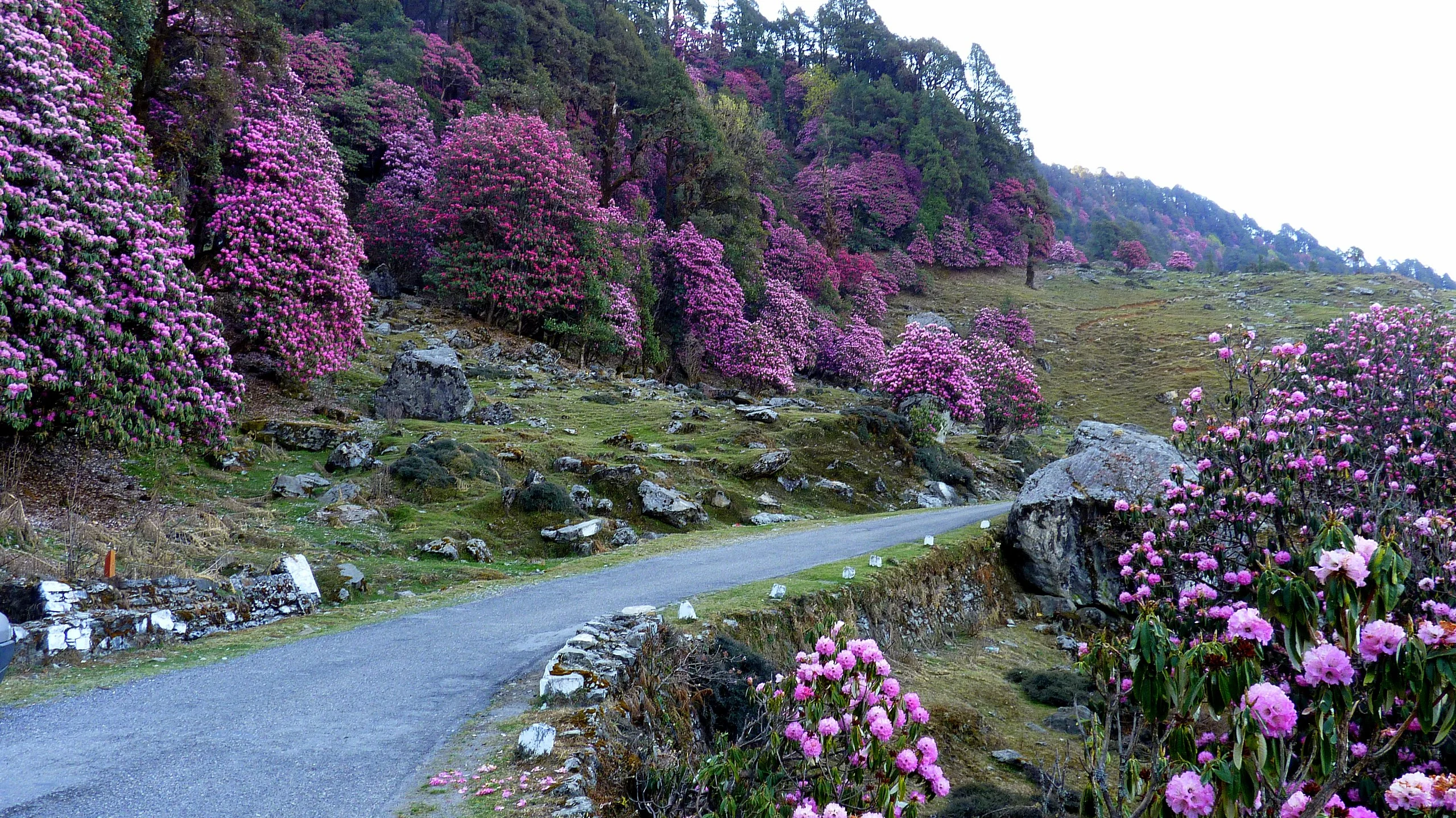
Learning from Local Guides and Porters
While fellow trekkers play a significant role in enriching your experience, local guides and porters are equally important contributors to the sense of camaraderie. These individuals are invaluable companions on your trek, ensuring your safety while sharing fascinating insights about the region’s flora, fauna, and culture.
Local guides often regale trekkers with stories about the mythology behind Tungnath Temple or point out medicinal plants used by villagers. Their knowledge and expertise make the trek more engaging and educational. At the same time, their warmth and humor create a relaxed atmosphere, encouraging open communication and bonding within the group.
Porters, too, deserve recognition for their hard work and dedication. Carrying heavy loads over rugged terrains, they embody strength and perseverance. Observing their resilience and interacting with them provides a humbling reminder of the human spirit’s capacity to endure and thrive.
Bonding Around Campfires and Meals
Few experiences rival the magic of gathering around a campfire after a long day of trekking. As the sun sets and the temperature drops, the flickering flames bring everyone together in a cozy circle. This is where true camaraderie blossoms—through laughter, storytelling, and the simple pleasure of sharing warmth.
Campfire sessions often turn into impromptu talent shows, with someone singing traditional Garhwali songs, another cracking jokes, or yet another sharing travel anecdotes. These moments create a sense of belonging, making you feel like part of a larger family. Even if you started the trek as strangers, by the end of the night, you’ll feel like old friends.
Mealtimes also serve as opportunities for bonding. Sharing meals prepared by local cooks or enjoying homemade snacks brought from home fosters a spirit of generosity and community. Passing around a thermos of hot chai or splitting a packet of biscuits becomes a gesture of goodwill, reinforcing the idea that we’re all in this together.

Support Systems During Tough Times
Trekking isn’t always smooth sailing. Fatigue, altitude sickness, or unexpected weather conditions can pose challenges that require collective support. In such situations, the strength of a group shines brightest. Fellow trekkers rally around those who need assistance, offering physical help, emotional reassurance, or practical advice.
For instance, if someone struggles with altitude sickness, the group might slow down the pace, ensure they stay hydrated, and provide moral support until they recover. Similarly, if rain catches you off guard, everyone pitches in to set up tents or dry wet gear. These acts of compassion highlight the importance of teamwork and empathy in overcoming adversity.
Such experiences teach valuable lessons about resilience, patience, and the power of community. They remind us that no matter how daunting the challenge, we’re stronger when we face it together.
Building Lifelong Connections
What makes friendships formed during treks in Chopta so special is their authenticity. Away from the distractions of daily life, people tend to be more open, genuine, and vulnerable. Conversations flow freely, whether you’re discussing your favorite books, sharing travel tips, or simply enjoying the silence of the mountains together.
Many trekkers who visit Chopta stay in touch long after their journey ends. Social media groups, WhatsApp chats, and email threads keep the connection alive, allowing you to relive the memories and plan future trips together. Some even return to Chopta years later, reuniting with the friends they made during their first visit. These enduring relationships are a testament to the power of shared experiences in forging lifelong bonds.

The Final Triumph: The Power of the Journey
The ultimate triumph of trekking in Chopta is not just the view or the summit—it’s the journey itself. The physical exertion, the mental challenges, the unpredictable weather, and the shared experiences all combine to create a memory that trekkers carry with them for life.
"The Chopta Tungnath Trek and Chandrashila summit trek are difficult, but they push you to find strength you didn’t know you had. You go through moments of self-doubt and exhaustion, but the reward is so much more than just reaching the summit. It’s about how you grow during the journey," says Rajesh, a first-time trekker.
Trekkers from all walks of life agree that the real triumph of the Chopta Chandrashila trek is the sense of accomplishment that comes with completing the trek, along with the lessons learned along the way.
Frequently Asked Question
What is Chopta known for?
Chopta is known for its pristine natural beauty, trekking routes like the Tungnath Temple trek and Chandrashila summit trek, and its serene environment perfect for trekkers and nature lovers.
How do I reach Chopta from Delhi?
You can travel from Delhi to Chopta by road, which takes around 9-10 hours. Alternatively, you can take a bus or private vehicle to Haridwar or Rishikesh and then continue to Chopta.
What is the best time to trek in Chopta?
The best time for trekking in Chopta is between March to May and September to December. For snow lovers, December to February offers a winter trekking experience.
How long does the Tungnath Temple trek take?
The Tungnath Temple trek typically takes 3-4 hours to complete, depending on your pace and fitness level.
Is the Chandrashila summit trek difficult?
The Chandrashila summit trek is moderately challenging. It involves a steep ascent from Tungnath Temple to the summit, but the stunning views make it all worthwhile.
Can I do the Tungnath trek and Chandrashila summit trek in one day?
Yes, you can complete both the Tungnath Temple trek and the Chandrashila summit trek in a single day, as they are closely connected, with Chandrashila summit being just above the Tungnath Temple.
Is Chopta suitable for beginners?
Yes, Chopta is ideal for beginners. The Tungnath Temple trek is moderate and offers a gentle ascent, while the Chandrashila summit trek can be a little more challenging but still manageable for those with some trekking experience.
What are the major attractions in Chopta?
The main attractions include Tungnath Temple, Chandrashila summit, and the breathtaking views of the Himalayan ranges, such as Nanda Devi, Trishul, and Kedarnath peaks.
How far is Chopta from Rishikesh?
Chopta is around 180 km away from Rishikesh, which typically takes around 6-7 hours by road.
Are there any accommodation options in Chopta?
Yes, there are several guesthouses, homestays, and campsites in Chopta, ranging from basic to more comfortable stays. Many trekking packages include accommodation as part of the package.
What type of food is available in Chopta?
In Chopta, food options are limited but include local Uttarakhandi cuisine, such as dal, roti, sabzi, and simple meals at homestays or guesthouses.
Is it safe to trek in Chopta?
Yes, trekking in Chopta is safe if proper precautions are taken. It is recommended to hire a local guide and trek in groups for safety, especially in the winter months.
Can I trek solo in Chopta?
Yes, you can trek solo in Chopta, but it’s advisable to go with a guide or join a trekking group, especially if you’re new to the area or trekking in the Himalayas.
What is the elevation of Chopta?
Chopta is located at an altitude of 2,680 meters (8,790 feet).
Is there mobile network coverage in Chopta?
There is limited mobile network coverage in Chopta. It’s best to inform your family or friends about your trek in advance, as there may be no signal in certain areas.
What should I pack for the Tungnath and Chandrashila treks?
Pack warm clothing, trekking boots, water bottles, sunscreen, camera, power bank, gloves, and a rain jacket. It’s essential to pack light but be prepared for changing weather conditions.
Are there any trekking packages available for Chopta?
Yes, there are numerous Chopta tour packages that cover Tungnath Temple trek, Chandrashila summit trek, and other services like transportation, accommodation, and meals.
How long is the Tungnath Temple trek?
The Tungnath Temple trek is about 3.5 km (1.5 miles) from Chopta, with an elevation gain of around 700 meters.
What is the altitude of the Chandrashila summit?
The Chandrashila summit stands at an altitude of 4,000 meters (13,123 feet).
Are there any medical facilities in Chopta?
There are limited medical facilities in Chopta, so it’s advisable to carry a first-aid kit and basic medications with you. In case of emergency, you will have to travel to nearby towns like Rishikesh for better healthcare.
What is the cost of a Chopta trek package?
The cost of a Chopta trekking tour package depends on the type of package, number of people, and services provided. Prices typically range from INR 4,000 to INR 10,000 per person.
Can I do the Tungnath and Chandrashila trek in winter?
Yes, you can trek to Tungnath Temple and Chandrashila summit in winter (December-February), but be prepared for heavy snow and cold conditions.
What are the challenges faced during the Chandrashila summit trek?
The main challenges during the Chandrashila summit trek include steep climbs, unpredictable weather, and the high altitude. Trekking at this altitude requires physical preparation and proper acclimatization.
What is the distance of the Chandrashila summit trek from Tungnath Temple?
The Chandrashila summit trek starts from Tungnath Temple and is approximately 1.5 kilometers (0.9 miles) from there.
Are there any local guides available for the trek?
Yes, local guides are available in Chopta for both the Tungnath Temple trek and Chandrashila summit trek. Hiring a guide is highly recommended for safety, navigation, and to enhance the overall experience of your trek.
